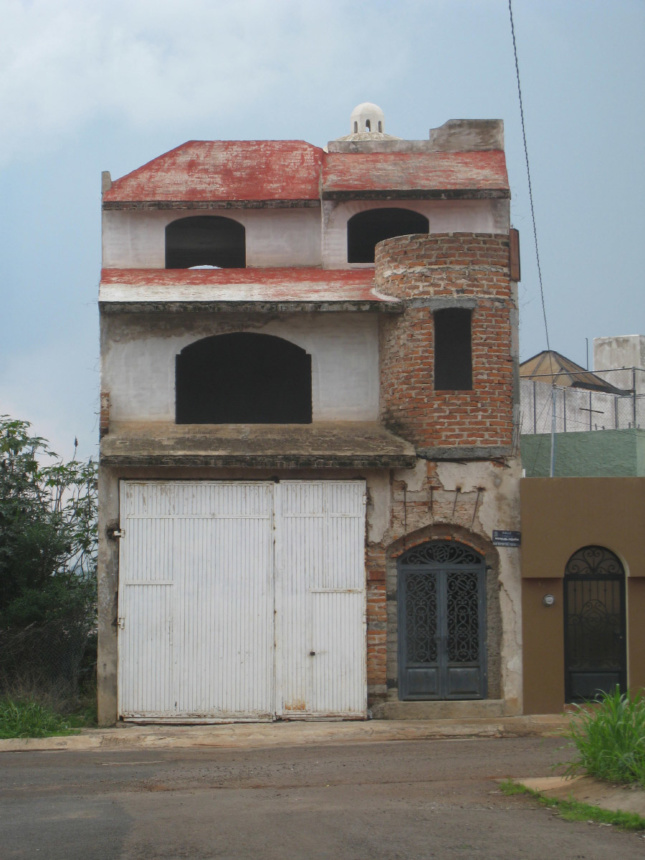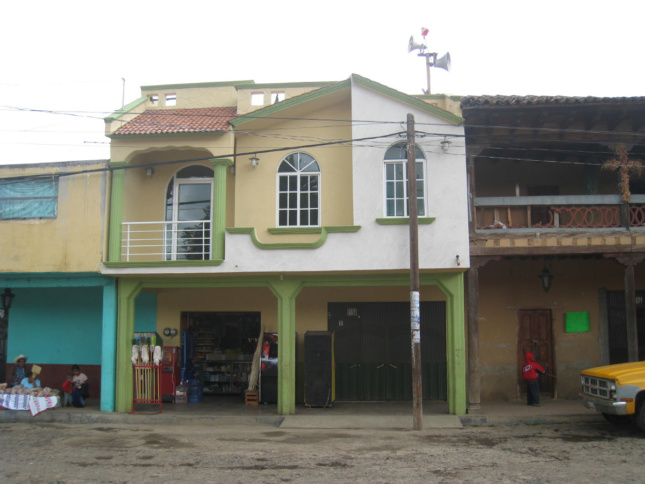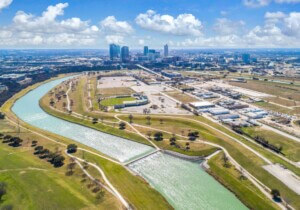This article is the third in a series that originally appeared in AN’s July/August 2018 issue which focuses exclusively on Texas and was guest edited by AGENCY. The rest of the essays will be released in the coming days and examine architecture and practice across the southern border of the United States.
In discussions of the U.S.-Mexico border region, what often gets lost is a full exploration of the geographic and social networks produced by the lives that span it. Taking in the meaning of the U.S.-Mexico boundary, the largest migration corridor in the world, requires an understanding of both ends of the journey as well as what lies in between. One way to do this is to follow the money—in this case, migrant dollars earned in various locations throughout the U.S. that are channeled back to households in Mexico. The economic term for this capital flow is remittances, typically used by political scientists, demographers, and NGOs that investigate how and if remittances alleviate poverty in receiving regions. I follow this capital flow to its material conclusions as manifested in migrant hometowns. The “remittance house,” a term I use to describe houses built in Mexico by workers performing unskilled or semiskilled wage labor (or migrants “from below”) in the U.S., reveals Mexican pueblos as distant hinterlands of American cities and as critical nodes in our understanding of the U.S.-Mexico borderlands at large.
I first became interested in the remittance house through the stories of my co-workers, Mexican male migrants who lived and worked in Berkeley, California, while investing a portion of their earnings into new homes in Guanajuato, Mexico. The Central Bajío state of Guanajuato and its neighboring state of Jalisco have historically high rates of both emigration and remitting. Economist Paul S. Taylor documented migrants using dollars to build or remodel homes in Jalisco as early as the 1930s. Jalisco is an epicenter of remittance construction that includes homes as well as communally funded public projects like rodeo arenas and cultural centers. Today, Mexico ranks as the world’s fourth-largest remittance economy after China, India, and the Philippines, receiving approximately $20 billion dollars annually, and new construction financed by remittance dollars is evident across Mexico’s 32 states.

Formally and materially, the remittance house has become a source of curiosity both for people who live in Mexican towns as well as for those peering in from afar. This has to do with the houses’ heavily articulated facades that present a dizzying array of representational strategies. Fluted columns, zigzagging concrete cornices, and repetitive pediment-shaped window frames grace facades topped with false fronts that represent gable roofs or brick battlements. These eclectic arrangements clash with the built fabric of small towns composed of adobe or fired brick buildings with teja tiled roofs—towns once marked by uniformity and homogeneity.
In the remittance house, architectural style carries great symbolic weight, as design ideas are pulled from various corners of migrant experiences and journeys. Homes with recessed yards, metal fences, carports, and picture windows are referred to as “estilo Californiano,” or “California style.” Yet they are hybrid forms, where the image of wooden stick-frame construction is translated into local masonry traditions, supported by migrants’ desire to have homes “built to last.” New migrant homes have created a maelstrom of commentary throughout small towns. A local architect in Jalisco described the migrant building style as “garigoleado,” or excessively adorned, pointing out a lack of rhythm, proportion, and pattern in the use of generic classical ornamentation, while some neighbors described migrant homes as distinctly modern. Whatever their stylistic attribute, the homes, as defined by artist Walterio Iraheta, are autorretratos—or self-portraits—of their makers. They are a material transformation of the built environment directly linked to the interior world of the self.
But the remittance house is not primarily an opportunity for migrants’ personal expressions; it is the material manifestation of the specific political and social conditions under which contemporary social mobility and immobility for migrants takes place. Structural inequality, an absence of access to legal documentation in the U.S., and diminishing opportunities for economic and social mobility in the U.S. and Mexico have produced the spaces in which the remittance house becomes a viable, albeit imperfect, option.
To understand these newly constructed homes as imperfect is to ask about the costs and consequences of binational building from below, building a dream home in one place while living and working in another. In order to remit, nuclear families are often separated or fragmented across geographies. For example, mothers and daughters live in a remittance house in Mexico, while fathers and sons work in and send money from the U.S. Meanwhile, elderly parents live in a home built with dollars on a street mostly abandoned or empty due to what neighbors refer to as “the floating population” abroad. Families split by gender or generation incur social and psychological costs as bodies are replaced by dollars, and living at a distance from one’s immediate family is normalized.

The project of building a remittance house—of attempting to secure and invest in a future for one’s family—is also susceptible to the complexities of living life as a migrant in the U.S. Both documented and undocumented migrants might lose their jobs, build new relationships in the U.S. while attempting to maintain marriages or relationships in Mexico, become responsible for their ill parents in Mexico, or become ill themselves. Undocumented migrants are especially vulnerable as they live under the terror of apprehension, incarceration, and deportation, and are generally unable to return home without incurring great risk. For any number of reasons, homes may be incomplete or abandoned altogether.
Ultimately, the remittance house teaches non-migrants important lessons. They are evidence of migrants’ strengths, the discipline required to achieve personal goals. They are evidence of complex social patterns and costs for families fragmented by global capital, and for whom remitting has become a way of life. Scaling up, they are also evidence of the Mexican and U.S. governments’ unwillingness to enact binational protections and opportunities for a flexible and exploited labor force that the U.S. economy has depended on for over 100 years. Understanding the remittance house in its messy complexity can cultivate the public’s awareness of the extended and complicated spaces that “migrants” are enmeshed in and co-constituting. If Mexican migrants in the U.S. were collectively supported, the term “remittance house” would become obsolete. With the capacity to choose where to live and work, and with the ability to travel, those who built homes in Mexico would join the millions of elite Americans and Mexicans who have second homes or vacation homes. For now, the remittance house captivates, and its meaning reverberates within Mexico and across the Rio Grande.











